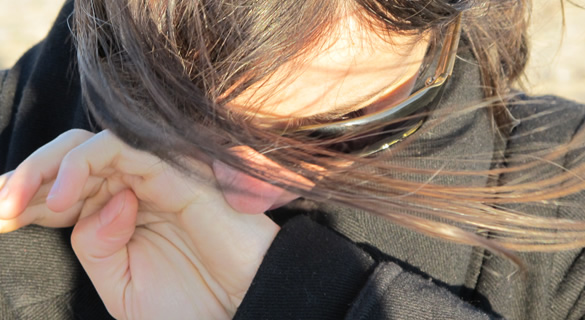 "A series of sharp observations about women's crying documented by a series of authentic songs."
"A series of sharp observations about women's crying documented by a series of authentic songs."A Short History of Crying (2010)
A stand up tragedyA Short History of Crying is a stand-up tragedy by Sanja Mitrovic
You know, this is very personal for me. It’s not just political. It’s not just public.
(Hillary Clinton, crying at a New Hampshire election campaign event, 7 January 2008)
A Short History of Crying is an investigation into the phenomenology of tears that touches upon the themes of memory, emigration and death. Throughout history crying has been connected to cultural conceptions of gender, age and class, and perceived as a shared non-verbal language in which we communicate complex and often contradictory emotions. In Western cultures crying is generally considered an intimate and private act. Showing emotions in public has anti-social character, signifying one’s weakness or lack of restraint. It is only relatively recently, with the emergence of reality television and the confessional culture, that the private suffering becomes a public spectacle. Today, sharing emotions with millions of others is not only allowed but is also encouraged as therapy and lucrative mass entertainment.
In her new work, A Short History of Crying, Sanja Mitrovic questions the social and cultural mechanisms related to public display of emotions. Contrasting personal statements with iconic scenes of crying in contemporary culture, as well as presenting the material from a research trip through the Balkans and the Netherlands, this ‘stand-up tragedy’ examines how emotions are manifested in different situations, and why we express them publicly.
Cast And Credits
Concept/text/direction/performance: Sanja Mitrovic. Dramaturgy: Felix Ritter, Marija Karaklajic. Stage design concept: Laurent Liefooghe. Set design realization: Douwe Hibma. Sound design: Evelien van den Broek, Vladimir Rakic. Light design: Katinka Marac. Video design: Janneke Kupfer. Research/artistic advice: Vladimir Tupanjac. Camera: Marko Stojmenov, Nadja Leuba. Voice over: Michael Jahoda. Assistant director: Guilio D’Anna, Maya van den Heuvel-Arad. English translation: Sinisa Mitrovic. Dutch translation: Sarah van Lamsweerde. Technicians: Paul Schimmel, Konstantin Leonenko
Production: Anke Wirken. Photo: Laurent Liefooghe, Stephen van Hesteren. Production: Stand Up Tall Productions, Amsterdam. Co-production: hetveem theater /Amsterdam, Center for Cultural Decontamination/Belgrade Thanks: Jan Barta, Susanna Brenner, Vesna Jovanovic, Dragan Klaic, Koen Kreulen, Borka Pavicevic, Sanne van Rijn, Vesna Vesic, Beursschouwburg (Brussel), Shady Lane Productions (Berlin) and all the people that contributed with their stories, songs and tears.
A Short History Of Crying is financially supported by European Cultural Foundation, Fonds Podiumkunsten Nederland, Amsterdams Fond voor de Kunst, SNS REAAL Fonds, VSB Fonds
Press
Switching between simple storytelling, physical performance, video documentation and humorous travelogue, she questions the mechanisms of crying: Childhood memories of the death of Tito, Serbian dirges and drinking rituals, Dutch seamen’s mourners and effectively orchestrated sob stories by the mass media make for an intelligent and witty presentation of crying.
, 20.12.2021
For a post-modernist theater maker, such as Sanja Mitrovic, there can be no doubt that crying and tears cannot be an expressive channel nor a means of communication with the audience but only a topic to be explored in a gray zone of true and false remembrances, lived and imagined experiences, private and intimate, but also pubic and collective, that need to be ordered, classified, sorted out in some sort of contradictory and tentative short
history. Of course, a performance is never a history, never a factual indisputable rendering of the past occurrences and certainties. The subject matter remains elusive, the time sequences blurred, ambiguities deeply entrenched. A short history of crying inevitably turns into a metaphor that fuses intimate emotions with pubic stimuli and regulation, reproduces them in the public space of the performance for the benefit of the spectators and prompts them to address and explore their own short history of crying, if they can, if they dare, if they care, as an exercise in self-knowledge and self-reflection, and not necessarily as an artistic act.
Dragan Klaic (excerpt from the book “A Short History of Crying”), 2011, 20.12.2021